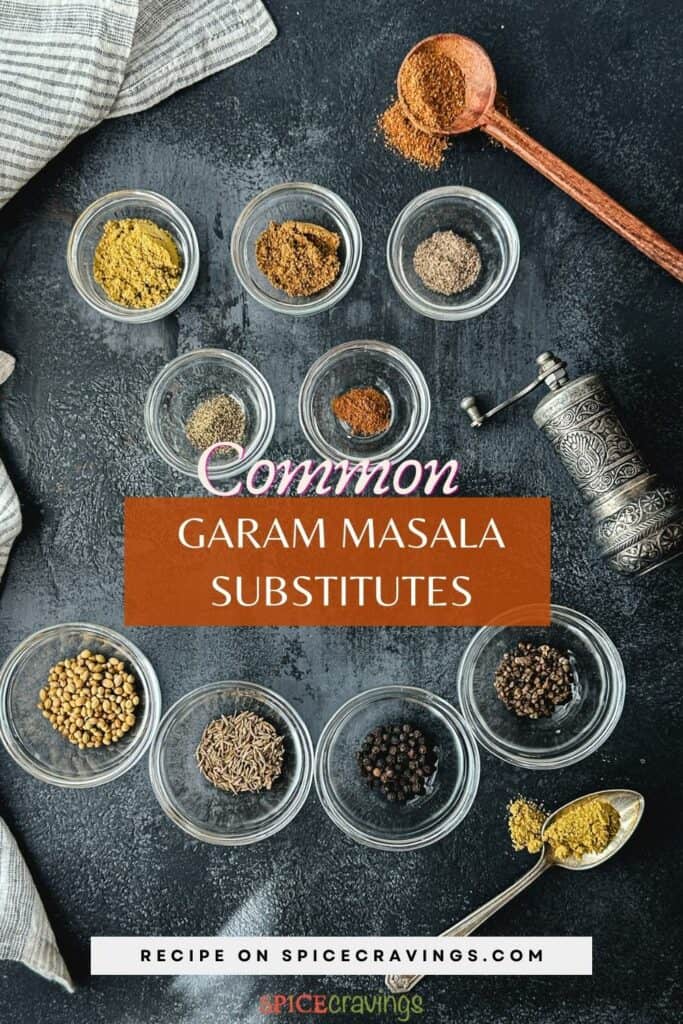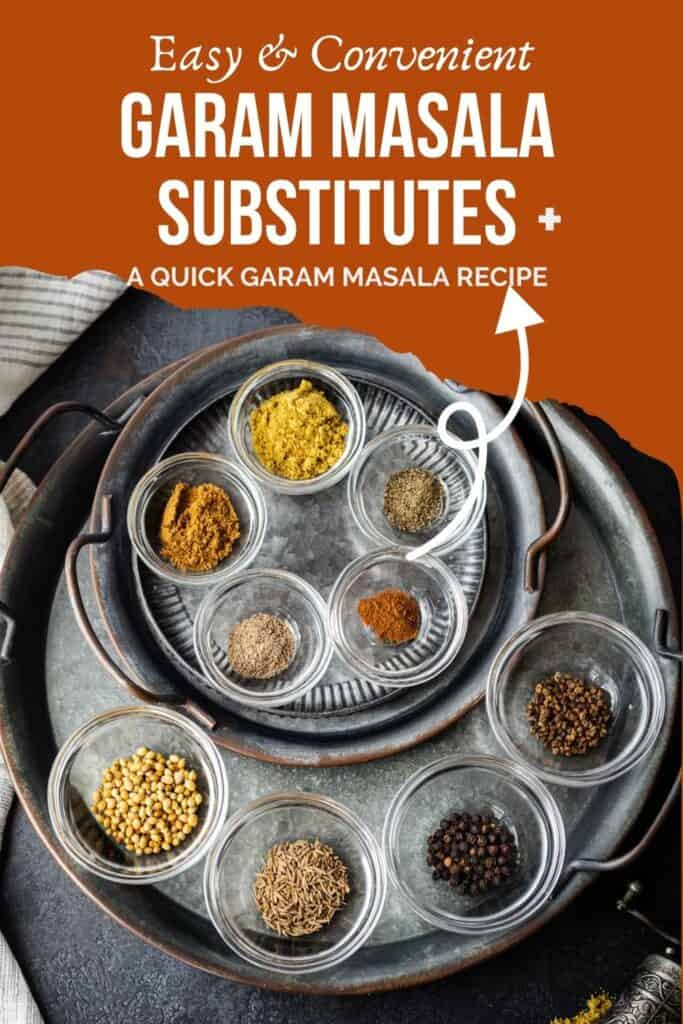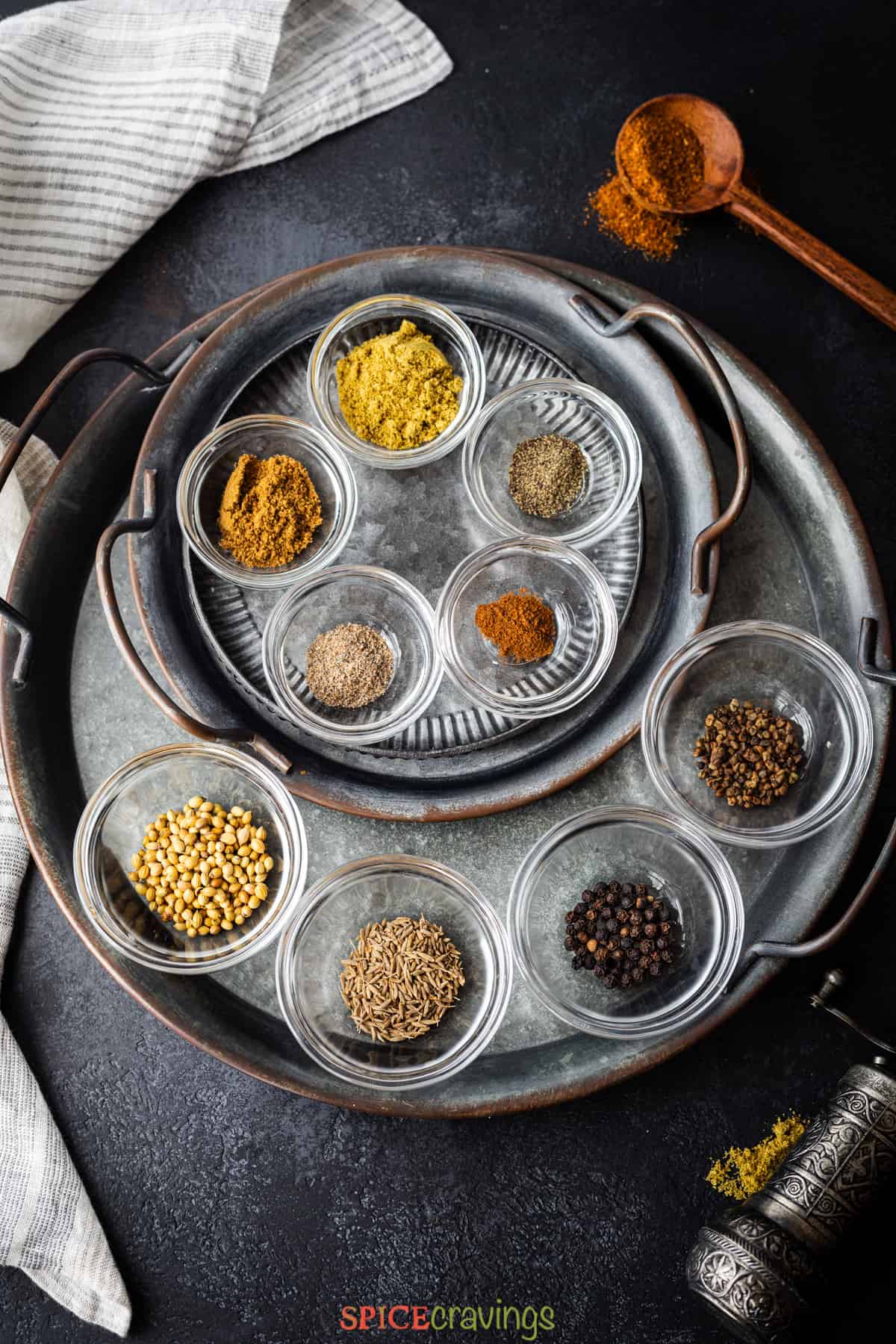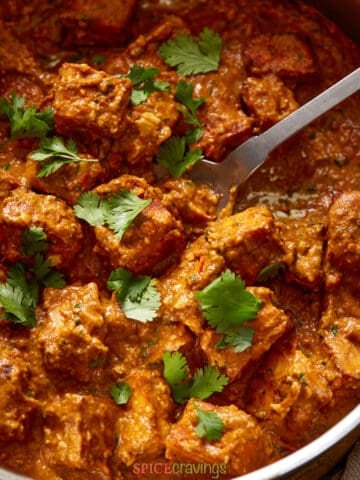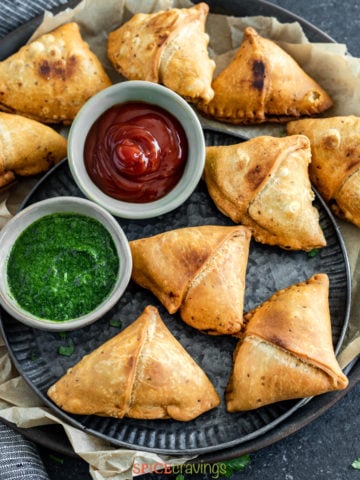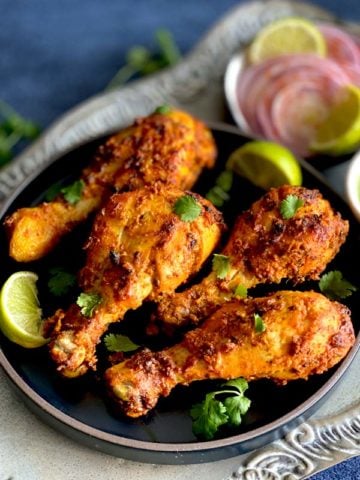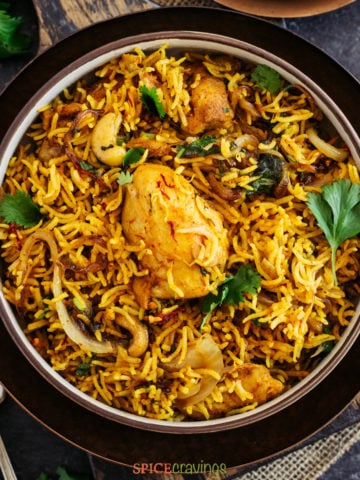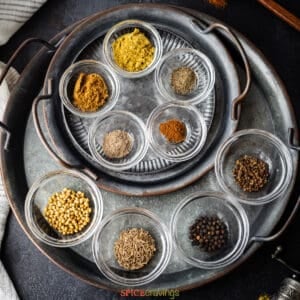What is Garam Masala?
Garam masala literally translates to warm (garam) spice (masala). It’s a traditional ground spice blend from the Indian subcontinent that infuses dishes with warmth, depth, and complexity.
The whole spices are first toasted to bring out their natural flavor and aroma, then ground to form a powder. Often referred to as the “heart of Indian cuisine,” every home has its own spin on this blend, incorporating regional influences and locally grown spices. Where Does Garam Masala Come From? Garam masala is believed to have originated in Northern India as it is especially found in traditional Mughal dishes. In Ayurvedic medicine, this blend of spices warms up the body, improving digestion and speeding up the metabolism.
What Does Garam Masala Taste Like?
Garam masala is a blend of sweet, floral, and savory spices with a mild touch of heat from black pepper. The taste varies based on the spices used, but it is known to have a warming overall flavor profile.
Garam Masala vs. Curry Powder: What’s the Difference?
Garam masala is similar to curry powder in that it includes such spices as cumin, coriander, and turmeric, but it leans more on the fragrant rather than spicy side. Curry powder also tends to contain more turmeric giving it a rich yellow color.
What Spices are in Garam Masala?
Garam masala includes many different spices, including but not limited to:
Coriander Cumin Cardamom Cloves Black Pepper Cinnamon Bay Leaf Fennel Seeds Nutmeg
Garam masala is a complex spice blend and the specific combination of spices will vary based on region or personal preference. Many households in India and South Asia have their own recipes for garam masala, and it is widely available in grocery stores nowadays.
Powder vs. Paste
Garam masala powder: The ground spice blend is more common and authentic. Because the ground spices directly hit the surface of the food or dish being prepared, dry powders are much more potent, allowing the natural oils in the spices to release as soon as they touch the hot food. Garam masala paste: Many supermarkets carry a premade spice paste sold in jars, but this is not really traditional. The pastes are typically made by mixing the dry spice blend with some form of liquid, such as coconut milk, vinegar, or water, along with additional aromatics and oil. The extra ingredients naturally dilute the spice powder, so pastes are a milder version and do not provide the same potency as the dry spice blend.
10 Best Substitutes for Garam Masala
Here is a list of the 10 best substitutes for garam masala. You can use any one of the following substitutes and follow the ratio recommended under each substitution:
1. DIY Quick Garam Masala (Recommended)
Mix together the following 5 ingredients and use for every 1 Tablespoon garam masala in your recipe:
2 teaspoons coriander powder 1 teaspoon cumin powder ¼ teaspoon green cardamom powder ¼ teaspoon ground black pepper ⅛ teaspoon ground cinnamon
2. Cumin, Coriander, Black Pepper, and Cardamom (Pretty Close)
My second favorite blend, this simple combo is very similar in taste to garam masala. Simply combine:
2 teaspoons coriander seeds 1 teaspoon cumin seeds ½ teaspoon black peppercorns ¼ teaspoon green cardamom pods.
Toast the spices in a dry skillet until fragrant, cool completely, then grind in a spice grinder. Use it at a 1:1 ratio for garam masala. If you don’t own a spice grinder or only have spice powders on hand, combine:
1 ½ teaspoons ground coriander ¾ teaspoon ground cumin ¼ teaspoon ground black pepper ⅛ teaspoon ground cardamom
3. Curry Powder (Easiest)
Curry powder may not have as much depth as garam masala, but it is a great substitute. Use an equal amount of curry powder as garam masala (1:1 ratio) in your recipe and add it at the beginning of cooking, rather than the end. Just know that the curry might be more yellowish since curry powder contains a larger quantity of turmeric as compared to garam masala.
4. Allspice and Cumin Powder
For a fast and simple garam masala substitute, mix 1 part ground cumin with ¼ part ground allspice. Simply combine:
2 teaspoons cumin powder ½ teaspoon allspice powder
Use this combination for every 1 Tablespoon garam masala in your recipe.
5. Pav Bhaji Masala or Sambar Powder
Pav Bhaji Masala is a popular Indian spice blend with hot, fiery, piquant notes used to season many Indian street foods. Sambar Powder is a South Indian spice blend containing many of the same spices as garam masala, with the addition of dry red chiles and dry coconut. Both can be used at a 1:1 ratio for garam masala.
6. Chole Masala / Chana Masala Powder
Chole Masala, or Chana Masala Powder, is a popular Punjabi spice blend that has the same background warmth as garam masala, with the addition of an acidic ingredient, such as pomegranate or dry mango powder. Follow a 1:1 ratio for chole/chana masala powder to garam masala.
7. Tandoori or Tikka Masala Spice Blend
Tandoori, or Tikka Masala Spice Powder, is an Indian spice blend used to flavor proteins that are then to be cooked in a tandoor (clay oven). The list of spices in tandoori spice blends is very similar to garam masala, with the addition of Kashmiri red chili powder, turmeric, and dry mango powder. Follow a 1:1 ratio for tandoori or tikka masala spice powders to garam masala.
8. Berbere Blend (Ethiopian Spice Mix)
Berbere is an Ethiopian spice mix that mainly consists of chili peppers, giving way to its hot, peppery, tangy flavor. Because the spice level is stronger than garam masala, use 2 teaspoons berbere for every 1 Tablespoon garam masala.
9. Ras El Hanout (Moroccan Spice Mix)
Ras El Hanout is a Moroccan spice mix heavy on star anise, which is why it has a dominant licorice flavor. Because it has a stronger flavor, use 2 teaspoons of Ras el Hanout for every 1 Tablespoon of garam masala in your recipe.
10. Taco Seasoning (Mexican Spice Mix)
Taco Seasoning is quite unlike garam masala, but it is a good substitute as it contains a nice amount of cumin, coriander, and ground red chiles. Use 2 teaspoons taco seasoning for every 1 Tablespoon of garam masala.
Spice Blends I Do Not Recommend
While I would love to use up any spice blend in my cabinet, there are some that do not work well as a garam masala substitute. I do not recommend:
Biryani Masala: Biryani masala is a spice blend used to season biryani recipes, but it is too overpowering to replicate the delicate flavor of garam masala. If that’s all you have, use 2 teaspoons for every 1 tablespoon of garam masala. Pumpkin Spice: Pumpkin spice includes too much cinnamon and is too sweet for a garam masala replacement. Chaat Masala: Chaat masala has a prominent flavor of heeng and amchur, giving way to a sour, sometimes bitter flavor if used in excess. In my opinion, it does not replicate the warmth of garam masala.
Tips for Using Substitutes of Garam Masala
Pay attention to whole spices versus ground: Quantities will vary based on whole spices versus ground spices. A good rule of thumb - the measurement for whole spices is usually double the measurement for ground spices. Add garam masala alternatives at the beginning of cooking: Traditionally speaking, Indian cooks add garam masala towards the end of cooking. On the contrary, the list of garam masala substitutes should be added at the beginning of cooking to add depth and allow the ground spices time to release their natural oils. Consider the type of dish you are preparing: Some garam masala substitutes may work better than others depending on the recipe. As always, taste and adjust as you go.
Traditional Garam Masala Recipe
If you are looking for a garam masala recipe to make at home, here’s the one I learned from my mom and have been making for years. You can find the detailed instructions for this recipe here, Mom’s Garam Masala Recipe:
3 tablespoons coriander seeds 1 tablespoon cumin seeds 2 teaspoons green cardamom seeds, or 2 tablespoons green cardamom pods 1 teaspoon whole cloves (about 20) 1 teaspoon black peppercorns (about 25) 2-inch cinnamon stick, flat cassia bark broken into ½-inch pieces 2 bay leaves, torn into small pieces 1 teaspoon fennel seeds (saunf) 1 black cardamom pod ½ teaspoon nutmeg
Recipes That Use Garam Masala
These are all part of the collection: recipes that use garam masala, as well as the Indian Recipes Series:
📖 Recipe
